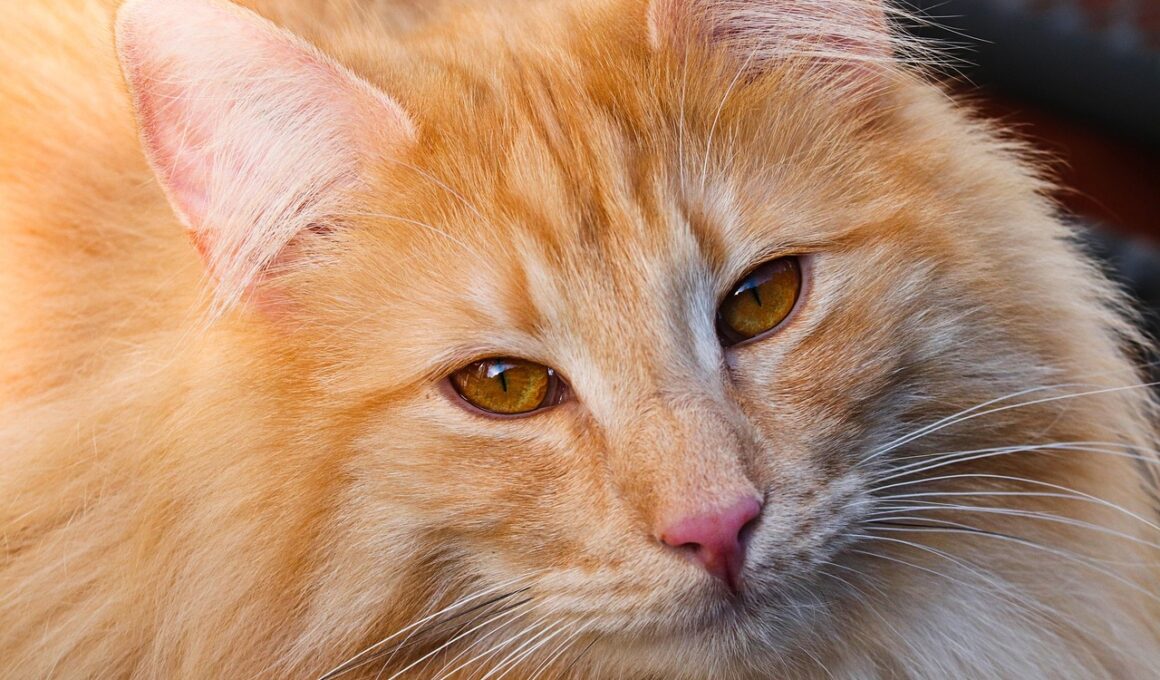Community Education to Support Sustainable Cat Breeding
In recent years, the conversation around cat breeding has evolved significantly, with an increasing focus on sustainable practices. Sustainable cat breeding not only benefits the animals but also enhances the overall wellbeing of the species. Community education plays a crucial role in promoting responsible breeding practices among cat enthusiasts and aspiring breeders. By engaging the community, we can ensure that more people are aware of the ethical considerations involved in cat breeding, including genetics, health, and welfare of the newborn kittens. The goal of this initiative is to cultivate a culture of responsibly managed breeding. This can lead to healthier cats with fewer hereditary ailments. Conducting workshops, online webinars, and community outreach programs can substantially raise awareness and provide valuable information. Those interested in breeding cats can be introduced to experts in the field, who will share insights about genetic testing and proper breeding techniques. Additionally, educational materials can be distributed to potential breeders, providing guidance on best practices. In doing so, we promote a community that is informed and committed to the welfare of cats, thereby elevating the standards of cat breeding.
Education programs must incorporate diverse methods for effective outreach and engagement within communities. One powerful way to achieve this is by using social media platforms to disseminate information quickly and widely. Online groups and pages can serve as forums for discussions surrounding sustainable practices. These platforms allow existing breeders to share their experiences, successes, and challenges. Creating informative content, such as videos featuring best practices for cat breeding, can attract and engage interested individuals. Additionally, collaborations with local veterinary clinics and pet stores can enhance educational efforts. These stakeholders can provide expert advice and facilitate workshops on topics such as health checks and vaccination requirements for breeding cats. In collaboration with these partners, local organizations can help host events that emphasize the importance of responsible breeding methods. Not only can participants benefit from knowledgeable speakers, but they can also interact with each other, fostering a sense of community. By taking advantage of various methods for education and outreach, we can enhance awareness about sustainable cat breeding and encourage participation in responsible breeding practices.
Identifying Sustainable Practices
To effectively promote sustainable cat breeding, it is essential to identify and disseminate best practices that support the health and welfare of the animals involved. One fundamental aspect of sustainable breeding is understanding genetics and choosing breeding pairs carefully. This involves knowledge of inherited health problems present in different breeds and ensuring that breeding cats are screened for such issues. It is crucial for breeders to maintain accurate records of their breeding stock and the lineage of their kittens. This transparency helps assess potential genetic concerns with prospective pairings. Another important practice is ensuring the comfort and health of breeding cats. This includes providing a clean environment, proper nutrition, and regular veterinary care. Additionally, consider the adoption of environmentally friendly practices, such as using sustainably sourced materials for cat care and housing, which can help decrease the ecological footprint of breeding endeavors. Educating the community on these sustainable practices paves the way for a future where cat breeding is conducted ethically and responsibly. More importantly, embracing these practices ensures healthier cats and a more responsible approach to breeding.
One significant challenge that sustainable cat breeding faces is the prevalence of irresponsible breeding practices. These often stem from the lack of knowledge and awareness among potential cat breeders. Thus, it becomes essential to counteract this by addressing common misconceptions associated with cat breeding. A misconception is that breeding a cat is straightforward and can be done without considering the health outcomes. Education can significantly shift this perception, emphasizing that proper breeding requires research, financial commitment, and time. Community workshops can focus on dispelling these myths, showcasing the complexity of responsible cat breeding. Moreover, highlighting the consequences of irresponsible breeding, such as genetic disorders and abandonment, can resonate with potential breeders. By effectively communicating the realities of breeding, we can discourage careless practices. Individuals might rethink their decision to breed and instead focus on rescuing or adopting cats in need of homes. This approach not only ensures the welfare of the cats but also fosters a sense of responsibility and compassion within the community toward all animals.
Involving Local Veterinarians
Incorporating the expertise of local veterinarians in community education programs is essential for success in promoting sustainable cat breeding. Veterinarians can serve as trusted authorities in the field, guiding potential breeders through various aspects of responsible breeding. This collaboration can take various forms, including organizing educational seminars where veterinarians present key information about genetics, health screenings, and responsible care. Veterinarians can provide valuable resources, including pamphlets or brochures regarding health concerns and proper care protocols. Furthermore, veterinarians can also engage in discussions around spaying and neutering to help balance the cat population and reduce the number of unwanted litters. By working directly with veterinarians, community education programs can ensure credibility and enhance the curriculum. This partnership can also facilitate low-cost or free health check clinics for breeders focused on ensuring that all breeding cats are healthy before mating. Ultimately, by actively involving veterinarians, communities will have better access to essential information that emphasizes the importance of health in breeding, thereby transforming the mindset towards sustainable practices.
Community education should also focus on promoting the importance of spay and neuter programs as essential components of responsible cat ownership and breeding. These programs help prevent overpopulation and subsequent abandonment, leading to a healthier and more sustainable cat population. By educating potential cat breeders about the benefits of spaying and neutering, we can encourage a more responsible approach to breeding. Local animal shelters, veterinarian offices, and community groups can partner to organize affordable spay/neuter clinics. Offering these services at reduced costs will eliminate financial barriers for many individuals. Additionally, community outreach programs can increase awareness of the long-term benefits of spaying and neutering. Former breeders or satisfied cat owners can share their experiences and emphasize the advantages for both pets and their families. Spaying and neutering can lead to healthier, longer-lived cats with fewer behavioral issues. By highlighting these points, community programs can foster a more conscious approach to cat ownership that benefits the animals and reflects responsible management of the cat population.
Conclusion: Building a Responsible Breeding Community
In conclusion, fostering community education to support sustainable cat breeding is a vital effort. By engaging various stakeholders, including veterinarians, existing breeders, and local organizations, it is possible to create a well-rounded educational program. This program can effectively promote responsible practices and enhance awareness of the importance of health, genetics, and ethical treatment of cats. As the community becomes more informed about sustainable practices, the culture surrounding cat breeding will shift. Potential breeders will be more likely to prioritize the welfare of their animals and consider the implications of their decisions. They will recognize that breeding is not just about producing kittens but about maintaining the health and integrity of the breed. Ultimately, by building a community focused on the welfare of cats, we can cultivate responsible breeding practices. This ongoing commitment ensures healthy, happy cats are bred while addressing the larger issues of cat overpopulation and abandonment. A concerted effort in education will be key to achieving a future where sustainable cat breeding thrives, and all cats live healthy, fulfilled lives.


